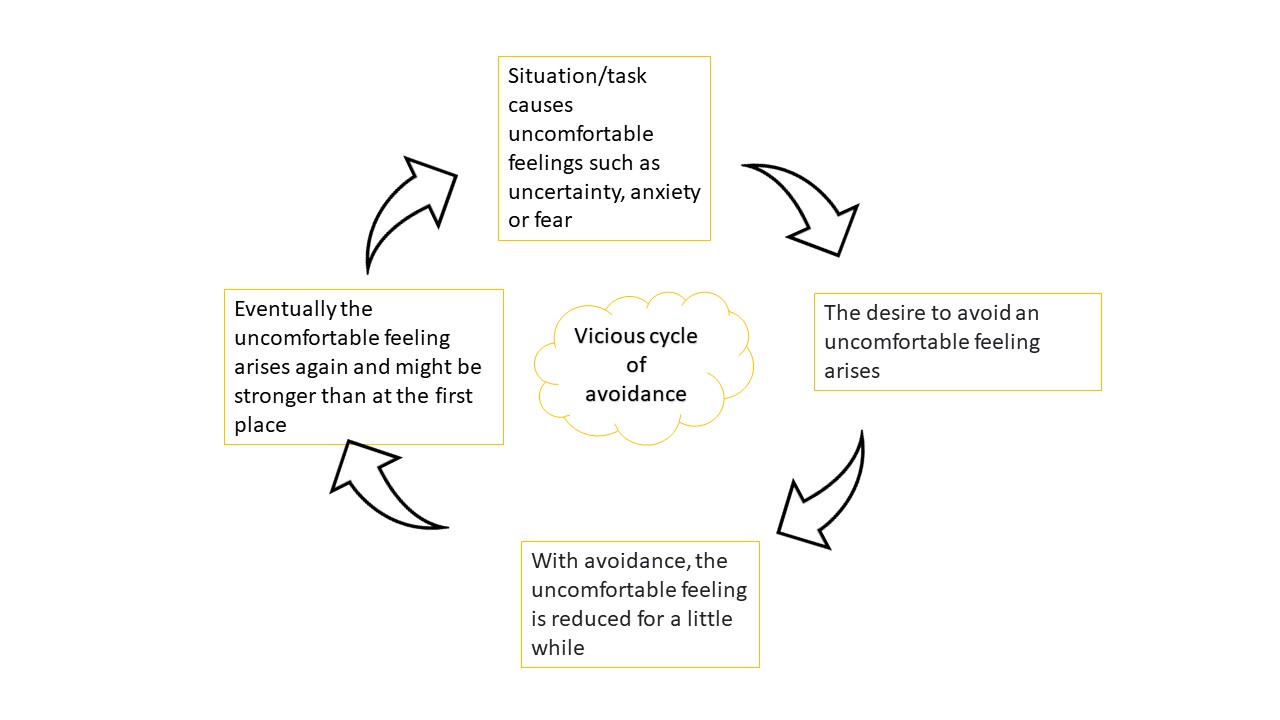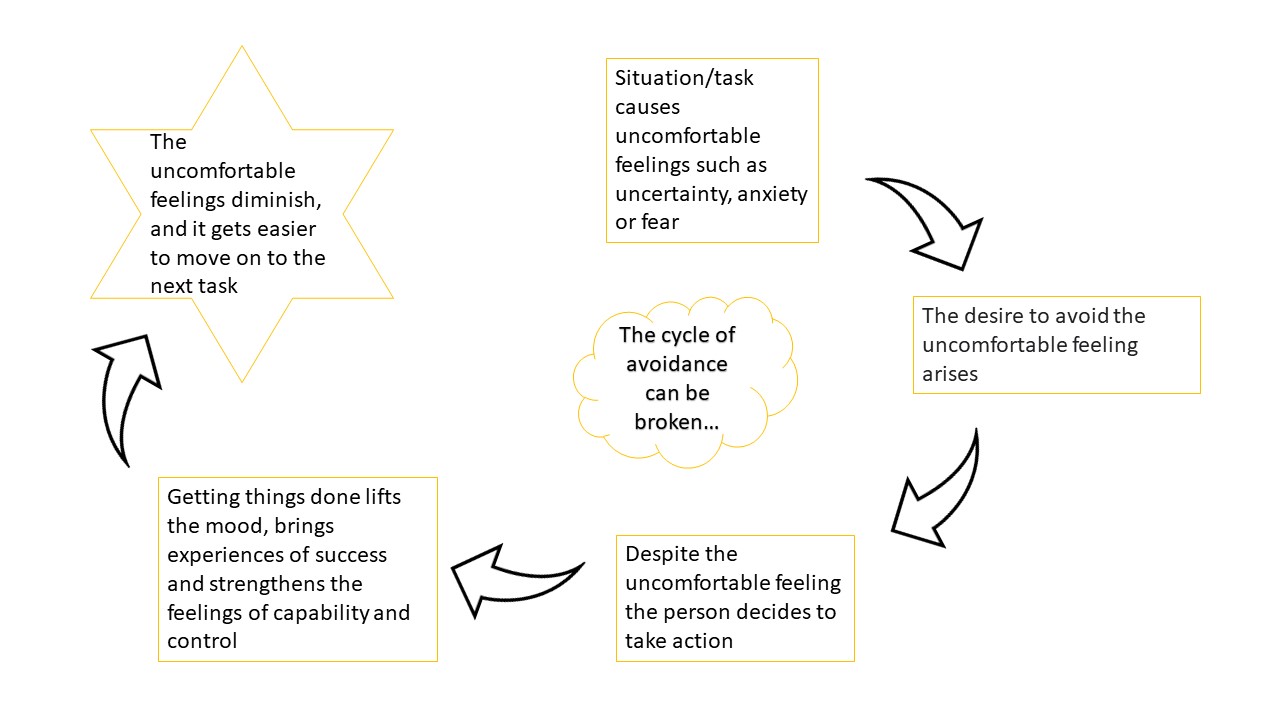CS-CV0005 - Mind & Study - toolbox for being well in studies, Lectures, 26.2.2024-21.4.2024
Kurssiasetusten perusteella kurssi on päättynyt 21.04.2024 Etsi kursseja: CS-CV0005
Cycle of avoidance
On the cycle of avoidance?
Do you often leave an assignment unfinished or drop out of course if it seems too difficult? Do you avoid situations where there is possibility that you might seem stupid or embarrass yourself? If you avoid study-related challenges or procrastinate things until the last minute, you don't give yourself a chance to succeed. Learning something new is always accompanied by uncertainty and sometimes failures.
Carefully examine the picture of the circle of avoidance. Pause to think about situations in which you yourself have been on the edge of avoidance (study assignments, performance situations, new, boring or challenging responsibilities, social situations, etc.). Write a description (or draw pictures if that’s easier) of what kind of emotions/feelings, thoughts and actions there are in your own circle of avoidance. If you don't feel that the circle of avoidance is typical for you, pause and think about how you act in those situations where you experience unpleasant emotions, but you still manage not to avoid the actions.
Picture 1, cycle of avoidance

Recognizing one's own circle of avoidance is important. However, after recognition, confusion or frustration may arise from the realization of being caught in such a circle. Is there a way to get out of there!?
Yes, you there is, although it usually doesn't happen in the blink of an eye. Study the image of breaking the cycle of avoidance and compare it to the examples you wrote in previous step. In what ways would the circle of avoidance be broken in those examples?
Picture 2, breaking the cycle of avoidance

Courage to take on challenges and face unpleasant emotions is also more-likely to give opportunities for success and promote the joy of learning, than avoiding difficult emotions. You can learn skills related to the regulation of emotions.
You can also make it easier to tackle the challenges with the following tips:
- Set reasonable goals for yourself. A reasonable goal is appropriate in relation to one's basic knowledge, available time and other resources.
- Divide the goals into concrete small tasks.
- It is natural that when studying that you sometimes you have to face uncertainty and unpleasant feelings. It is good to practice facing them.
- Although it's good to get to know yourself as a student, it's also good to do this one piece at a time - and it's also good to share your worries with others, because then it becomes visible that you're probably not the only one who feels this way.
- You can contact, for example, a study psychologist, if you notice that avoidance have formed a circle where experiences of failure make you feel like a bad student and make you withdraw from those situations. Remember, you can contact someone already at early state of this and then, get support breaking the cycle asap!
Before continuing to the next section, read the instructions for making a more sustainable change in (materials can be found in orientation week-section). Breaking the circle of avoidance is also about making a change!
